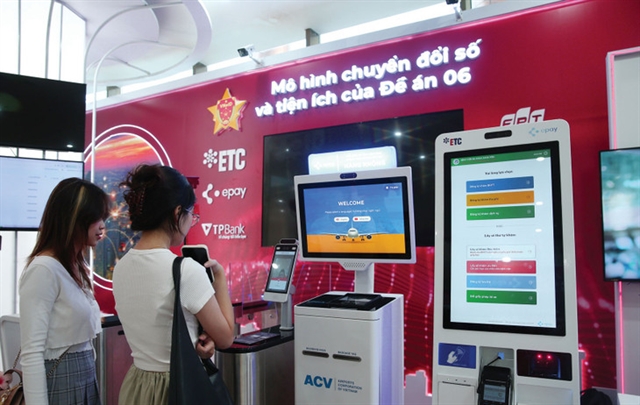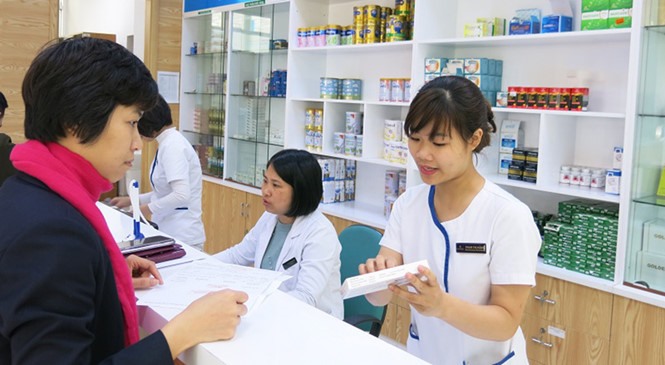 Business Beat
Business Beat

After making an entry into the automobile manufacturing industry, Vingroup, the country’s leading property company, has set its sights on the US$5.3 billion pharmaceutical sector.
 |
| On April 10 Vingroup said in its website that it has established Vinfa JSC and would spend VNĐ2.2 trillion ($96.5 million) to set up a 10 hectare drug manufacturing and research centre in Gia Bình District in the northern province of Bắc Ninh.— Photo Vingroup |
After making an entry into the automobile manufacturing industry, Vingroup, the country’s leading property company, has set its sights on the US$5.3 billion pharmaceutical sector.
On April 10 Vingroup said in its website that it has established Vinfa JSC and would spend VNĐ2.2 trillion ($96.5 million) to set up a 10 hectare drug manufacturing and research centre in Gia Bình District in the northern province of Bắc Ninh.
The first phase is scheduled to be launched in the third quarter of this year with research, production, logistics, and support facilities.
The first priority of the centre is research into and production of traditional medicines of Vietnamese origin for both the domestic and export markets.
Besides, Vinfa will make food functional, vaccines, and medical equipment of international standards. It will collaborate with partners from the US, Europe and Australia to acquire know-how and technology and import drugs to distribute in Việt Nam.
The Vinfa plant is said to be equipped with the most modern equipment and manufacturing lines to optimise capacity and ensure product quality.
The entry of Vingroup into the pharmaceutical sector together with some major changes in the investment and business strategies of large pharmaceutical companies in recent times has not only underlined the huge potential of the country’s pharmaceutical market but also indicated the fierce competition brewing in this industry.
In March Vietnam Dairy Products Joint Stock Company (Vinamilk) and Hậu Giang Pharmaceutical Joint Stock Company (DHG Pharma) had signed a deal to collaborate in pharmaceutical research and development.
The aim is to meet consumers’needs of healthcare and bring new values to the community.
Under the strategic partnership, DHG Pharma and Vinamilk will jointly build new co-brand products or develop existing ones to serve the healthcare needs of people from all walks of life.
The two firms will also coordinate in supplying raw material to produce supplementary food products, utilising the strengths of each other’s distribution capacity to help people easily access and consume nutritional and healthy products.
In addition to this, the two companies will help each other seek partners and customers as well as introduce scientific research to create new values, aiming to provide consumers at home and abroad with products with international quality.
DHG Pharma hopes to sustain average revenue growth of 15 per cent a year and reach US$300 million by 2020, becoming Việt Nam’s biggest generic drug maker and acquiring a 10 per cent share of the locally made drug market.
Another major drug company, Traphaco, plans to produce foods such as probiotics for children, and upgrade some of its production facilities to meet EU-GMP/PIC/S-GMP standards this year.
Traphaco’s major foreign shareholders are Vietnam Azalea Fund Ltd. belonging to Mekong Capital (25 per cent stake), Vietnam Holding Ltd. (10.43 per cent) and Citigroup Global Markets Ltd. (4.75 per cent).
With the upgraded factories, Traphaco aims to become one of the largest drug producers in Việt Nam by 2020 with market capitalisation of VNĐ10 trillion ($454.5 million), revenues of VNĐ4 trillion ($181.8 million), and a distribution network of 40 branches.
Noteworthy is that most of the pharmaceutical companies’ new big investments have been made into producing new drugs including functional food.
According to Việt Nam Report’s December 2017 survey of local pharmaceutical firms, 83 per cent of those surveyed ranked research into new drugs including food supplements as their main strategy for 2018.
The pharmaceutical market is on track for steep growth. The 2017 market turnover was $5.2 billion, up some 10 per cent, according to Business Monitor International.
The industry is expected to sustain double-digit growth for the next five years. Drug companies are very optimistic, with nearly 75 per cent of businesses anticipating the industry to grow at 10 per cent.
Business Euromonitor International said the industry is likely to be worth US$7.3 billion next year.
By 2021 per capita spending on pharmaceutical products is expected to be worth $55, double the current figure of $30.
Analysts said demand remains huge, and the country still has to import plenty of its pharmaceutical needs from around the world.
For instance, in 2016 Việt Nam spent $2.5 billion on drug imports, including $200 million to import brand-name drugs from France, Germany and the US.
The food supplements segment is now considered to be the most attractive because of its huge profits.
A DHG Pharma executive said his company’s gross profit margin on foos supplements is 50 per cent.
IMS Health said the market could expand to be worth US$7.7 billion by 2021 and US$16.1 billion by 2026.
While the market’s potential is enormous the competitiveness of many companies, including major ones, remains low, a point proved by the predominance of imports.
Not surprisingly, many local companies are rethinking their business strategies and stepping up investments to improve their competitiveness.
Banks pay generous dividends after excellent year
In previous years when Asia Commercial Joint Stock Bank (ACB) paid dividends of around 10 per cent to its shareholders, it was considered to be high for the banking sector.
But after the bank decided to raise its dividend to 15 per cent for 2017 at its annual general meeting recently, it is somewhat of a laggard.
On April 21, the Hồ Chí Minh City Development Joint Stock Commerical Bank (HDBank)’s plan to pay 35 per cent, 15 per cent in cash and 20 per cent in bonus shares, was approved by its shareholders.
For 2016 the lender had paid 30 per cent.
VPBank also pays attractive dividends. At its general shareholders meeting on April 19, the bank approved to pay dividends and bonus shares at the impressive rate of 67 per cent for 2017, a record high in the banking industry.
The bank also said the dividend payout ratio this year would be more than 60 per cent if the bank achieved a profit of more than VNĐ10 trillion (US$440.5 million).
Some smaller joint stock banks are also paying large dividends. Việt Nam International Commercial Joint Stock Bank (VIB) has just announced it would pay 5 per cent in cash and 31 per cent in the form of bonus shares.
LiênVietPostBank has also hiked its dividend rate from 10 per cent in 2016 to 15 per cent in 2017.
Sài Gòn Commercial Joint Stock Bank has also made its shareholders be happy by deciding to use VNĐ600 billion from its profits to issue bonus shares.
But some banks have yet to make dividend announcements despite a sharp increase in profits last year.
Techcombank, for instance, has reported over VNĐ8 trillion (US$352.4 million) in profits but has not yet decided to pay dividends, explaining that it wants to list its shares first to attract investors.
A big spike in profits is the main reason banks are doling out big dividends.
Many have reported entering the Trillionaires Club. VNĐ1 trillion equals $44.2 million.
BIDV reported a huge pre-tax profit of VNĐ8.8 trillion (US$387.6 million) for 2017, its highest ever and well in excess of its target.
Vietcombank reported pre-tax profit of more than VNĐ10.8 trillion, a year-on-year increase of 32 per cent. This is the first time that profits have exceeded VNĐ10 trillion for any local lender.
Besides these State-owned banks, many other joint stock lenders have also reported surpassing their targets for 2017.
The chairwoman of HD Bank, Nguyễn Thị Phương Thảo, said her bank’s pre-tax profit in 2017 was VNĐ2.42 trillion, 2.1 times up from the previous year.
Sacombank, OCB, TPBank, LienVietPostBank, and VIB have also reported similar increases.
A report from the National Financial Supervisory Committee (NFSC) estimated that profits in the banking sector in 2017 would rise by more than 40 per cent. — VNS




